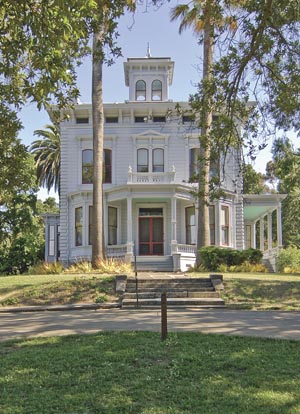The suggestion of a day out in nature in the town of Martinez is
likely to wrinkle some foreheads and furrow some brows. Where
exactly is Martinez anyway, and what natural attraction could I
possibly want to see there? I’ve got answers — good ones. Marty
Cheek called me a couple weeks ago and invited me on an excursion.
He slyly wouldn’t reveal the destination, but felt confident I
would enjoy it. Last week, as we headed north on Highway 680, he
asked,
”
Any idea where we’re going?
”
Other than Mount Diablo —
”
No, it’s not Mount Diablo
”
— I couldn’t think of a likely destination up the 680 corridor.
Around Walnut Creek, I asked,
”
Are we going to John Muir’s house?
”
The suggestion of a day out in nature in the town of Martinez is likely to wrinkle some foreheads and furrow some brows. Where exactly is Martinez anyway, and what natural attraction could I possibly want to see there? I’ve got answers — good ones.
Marty Cheek called me a couple weeks ago and invited me on an excursion. He slyly wouldn’t reveal the destination, but felt confident I would enjoy it. Last week, as we headed north on Highway 680, he asked, “Any idea where we’re going?” Other than Mount Diablo — “No, it’s not Mount Diablo” — I couldn’t think of a likely destination up the 680 corridor. Around Walnut Creek, I asked, “Are we going to John Muir’s house?”
“Yup.”
In 1890, 10 years after his marriage to Louie Wanda Strentzel, Muir moved to a 2,600-acre ranch in Martinez. There he raised his two daughters, and in partnership with his father-in-law, managed the ranching operation. In addition to his natural history skills, Muir had the business acumen to run a very profitable ranching operation that would give him the financial independence to continue his wanderings and write his books until his death in 1914.
Muir’s home is now a national historic site run by the National Park Service. When Marty and I arrived, we commented on the odd juxtaposition of Muir’s ranch house and the crazy hubbub all around it. Highway 4 and Alhambra Avenue pulse with cars and commercial activity that is in stark contrast to the bucolic setting this ranch must have been 100 years ago.
We paid our $3 and walked the short distance up to the stately home. From the home’s perch atop a knoll overlooking the Alhambra Valley, it is easy to imagine the long-gone orchards reaching down the valley. Two palms guard the stairs to the front door of the lovely two-story building. The highlight is surely the upstairs study where Muir wrote his famous works. Papers and maps are strewn about as though Muir has only stepped out for a moment.
We strolled the nine acres of grounds that the park service retains from the old ranch. Some fruit trees remain as well as the Martinez adobe (built in 1849), and my favorite, a giant sequoia planted by Muir himself.
Marty did not pick just any day to visit Muir’s home. Each summer month on the evening of the full moon, the park service offers a free Full Moon Walk to the top of Wanda Mountain, named for his eldest daughter. If you have crossed Muir Pass in the Sierra, you know that the first lake on each side of the pass is named for one of his two daughters, Wanda and Helen.
We joined a group of about 20 people at dusk at the foot of Wanda Mountain. The one-mile walk up Wanda Mountain is paced for people of all ages with occasional stops for ranger talks. Near the top, we emerged from the forest of oaks and bays onto a rolling grassy hilltop with views across the delta and east bay. Right on schedule, the full moon rose right over Mount Diablo. What a sight.
Full Moon Walks are scheduled for July 15, Aug. 13, and Sept. 12. They are free, but you must make a reservation by calling (925) 228-8860). Plan to get there early enough to tour Muir’s house that closes at 5 p.m. We filled the time in between with dinner and a great walk at Martinez Waterfront Park along the Carquinez Straits.
A little history and a little nature where you least expect it. It was a great day. Thank you, Marty.










